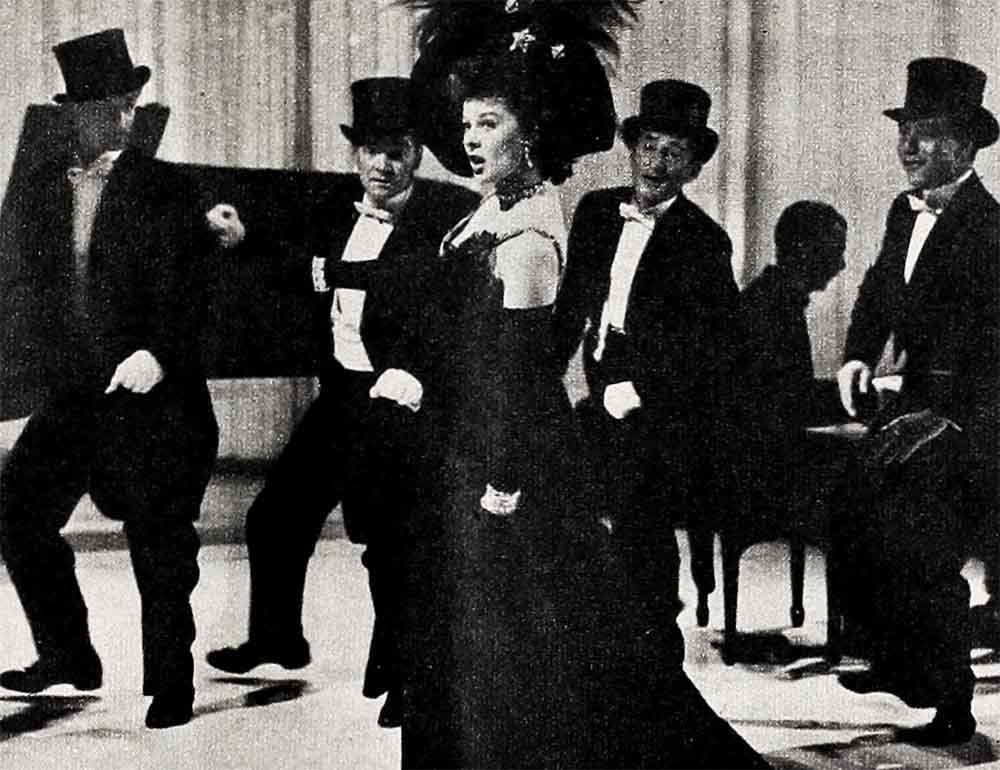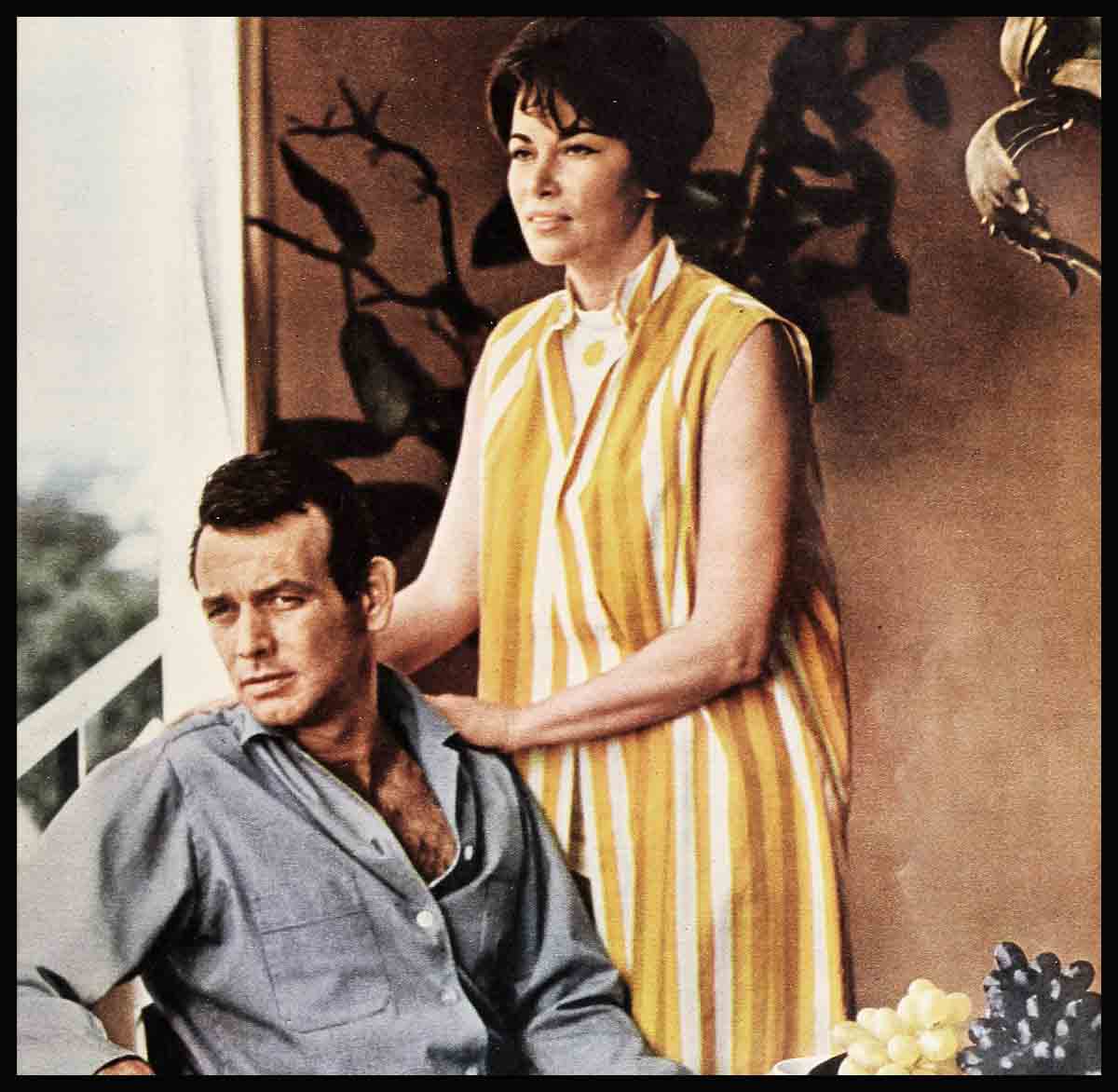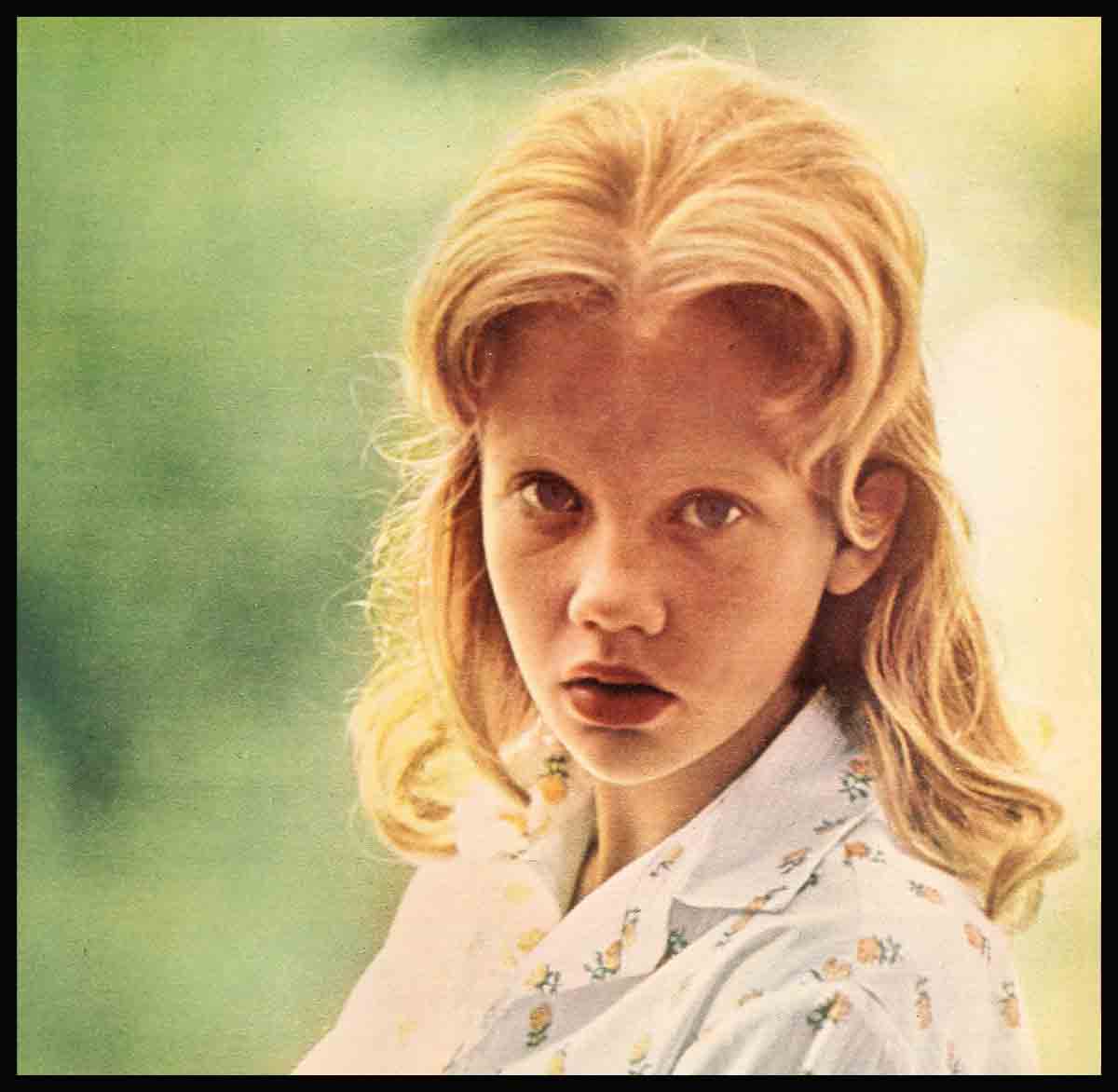She Lived my Life!
Of all the girls in Hollywood who might have played me in “With a Song in My Heart,” the film story of my life, Susan Hayward was my choice—because she has such heart—oh, such heart.
One of the greatest emotional experiences of my life was when I sat in a dark projection room, alone with my husband, and saw this picture. Even though I’d spent four months at the Fox studios, recording the songs and acting as technical adviser, it gave me a terrific impact to watch myself living through it all again. Myself, I say, for Susan Hayward, who plays Jane Froman, is me.
AUDIO BOOK
All the time she was doing the picture, off the set as well as on, she lived me and breathed me. And so similar to mine is the quality of her speaking voice that it seems perfectly natural when my songs seemingly come from her lips.
The first time I watched Susan playing me, I thought her mannerisms were not right. “I don’t raise my head, lift my chin when I start to sing,” I said to myself, “or do I?” Upon arriving home that evening, I made a dash for a mirror and proceeded to sing two or three of my favorite numbers. And in the mirror I saw the raise of the head, the quick lift of the chin, the mannerisms which are part of me but of which I’d been unconscious until, in the unflawed mirror of Susan Hayward, I saw them played back to me.

People often question a screen biography, wonder if it is completely authentic. There need be no, such doubt about “With a Song in My Heart.” Not once did I feel, either in the studio or later in the projection room, “Oh, no, this isn’t the way it was!” Not once.
Physical likenesses differ, of course, Susan being fair and Wild-Irish-Rose of skin, with a flame of copper hair and hazel eyes while I am olive-skinned, with very dark hair and blue eyes; and whereas Rory Calhoun who plays John is tall and dark, with a heavy mane of hair, my John is small and blond—and almost bald! But the semblance doesn’t matter, when actors are playing real people, if the spirit is right.
“Do you think,” a friend asked me, “that Susan Hayward, in real life, could go through what you went through, come through as you have come through?”
“Yes,” I said, “oh, yes!”
And I was reminded, as I spoke, that Susan as a child suffered a dreadful accident when a car ran over her body, fracturing both thighs. Doctors at first thought she would die, then feared she would never walk again. But Susan, being Susan, fooled the doctors. In six months she was walking.
I recalled, too, a serio-comic little anecdote told me about the teen-aged Susan, who very much wanted to play a certain part—and how, upon being told that she was too young, that the woman in the script was a more mature and experienced woman, who had suffered, she had said, with sixteen-year-old dignity, “I have suffered, too!”
Susan played that part she wanted to play—just as, recently, she got to play in “With a Song in My Heart.”
Long before the filming of my story was more than a gleam in producer Darryl F. Zanuck’s eye, Susan went to him and said, “Look, I understand there’s a chance you may do Jane Froman’s story. If so. I’ve got to play it!”
When, in May, 1951, I went to the Coast and began to record my songs for the picture, Susan always was around. She is a strange girl—so sensational in appearance, so quiet of voice and manner. She sat on the set, day after day, three and four hours at a time, watching every move I made as I sang, watching, always watching . . .
Then, ten days before we went before the cameras, she came up to me in the commissary one noon and said, “I’d like to talk with you. May I—and when?”
“How about now,” I said, “this afternoon.”
Half an hour later we met in Susan’s dressing room and spent the whole afternoon and far into the night going over the script, scene by scene. She asked about my childhood, my mother, my father, my grandmother! She wanted to know what kind of clothes I wore, what my drives were, my tastes, interests, hobbies.
As I write this months later, I can’t, of course, recall our hours-long talk, word for word, but it went something like this:

“Immediately after the Clipper crashed, and you found yourself in the water,” she asked, “how did you feel?”
“Numb,” I told her, “in shock.”
“Not afraid?”
“No, not afraid. Not then. Not yet.”
“What did you and the Clipper’s copilot, John Burn, talk about all the while he held you up in the water, saved your life?”
“Trivialities,” I said. How well I remembered! And how many times I recalled those same trivialities on that later day this April when I flew down to Puerto Rico to see John after another crash! But it is perhaps fortunate we cannot foresee the future and. talking to Susan, I thought only of that first crash.
“What exactly were your injuries—and John’s?”
“I had a compound fracture of the right leg, left leg nearly severed below the knee, two broken ribs and my right arm fractured in several places. John suffered two fractured vertebrae of the spine and a fractured skull.”
Susan’s hands, an emotional barometer, clenched as I spoke and her face was pale as paper.
“How did you feel when you knew there was a chance of losing your leg? Did it floor you? Or did it put fight into you?”
“Before, and for a time after, my first operation (which I was positive would be the only one) I was quite hopeful. After that, after each successive operation, I felt deepening doubt and a little bitterness . . .”
She asked me then, “What, in all that time, was your greatest and gravest problem?”
“To have to go out and make dough again, after the twenty-five operations,” I said, “in order to pay for the pain. The real fight, Susan, the real problem was not to hate all human beings.”
“I have to know,” Susan would say, from time to time, as if speaking to herself, “I have to feel it first.”
She wanted to know why I went overseas with the USO again, in May of 1945, while I was still on crutches.
“Because I was on crutches,” I said. “My object in going was to prove to a lot of boys who were hurt, as I was hurt, that they could pull out. I wanted them to think: ‘If a girl can do it, so can I.’ ”
I told Susan about the young G.I., played by Robert Wagner. “It was so stirring,” I said, “to be able to make a boy walk and talk when the doctors couldn’t, when nurses couldn’t—oh, brother!”
She asked me no more questions that day. She broke up completely. “It moves me so,” she said, burst into tears and ran away! And when she did that scene before the cameras, she dissolved in tears, too—and ran off the set!
Shortly after Susan began working in the scenes in which Jane Froman goes back to the hospital time after time for operation after operation, she went to director Walter Lang and said, “Look, make me ugly—a girl can’t go through all this and come out looking beautiful!” And so, in this sequence, particularly in the scene after one of the operations when she gestures toward her leg as she is coming out of the anesthetic, asks, “Is it still there?” she looks and sounds as I used to—gray, grim, hair messy, tongue thick.
Night after night, Susan would leave the set, go home and to bed. Her twin boys—she’s got two of the dearest boys, Timothy and Gregory—came on the set once or twice (it was probably Susan’s only chance of seeing them) and they’re the three cutest people together! Susan’s attitude toward her little sons is so adult. She treats them like little men, with courtesy, with charm, with humor. Susan was doing the scene in which she appears to sing the picture’s theme song, “With a Song in My Heart” while my recording of it is played on the sound track. It goes, you know: “With a song in my heart, heaven opens its portals to me . . .” The next day she told me, amused, that the boys were going around the house screaming, “With a song in my heart, heaven opens its portholes to me!”
When the picture was finished and John and I saw it together, we both sat very still after the final fade-out. Then John said, “I think this is one of the most wonderful pictures that ever came out of Hollywood.”
“I can’t be very objective about it—yet,” I began, “since I was the technical adviser and it is my story and all. It would sound hammy if I—” Then I broke, “All right, I’ll be a ham about it. I think it’s wonderful, too!”
And I think, too, that in this picture, this fabulous girl, Susan Hayward, has given the performance of her career.
THE END
It is a quote. PHOTOPLAY MAGAZINE JULY 1952
AUDIO BOOK





No Comments